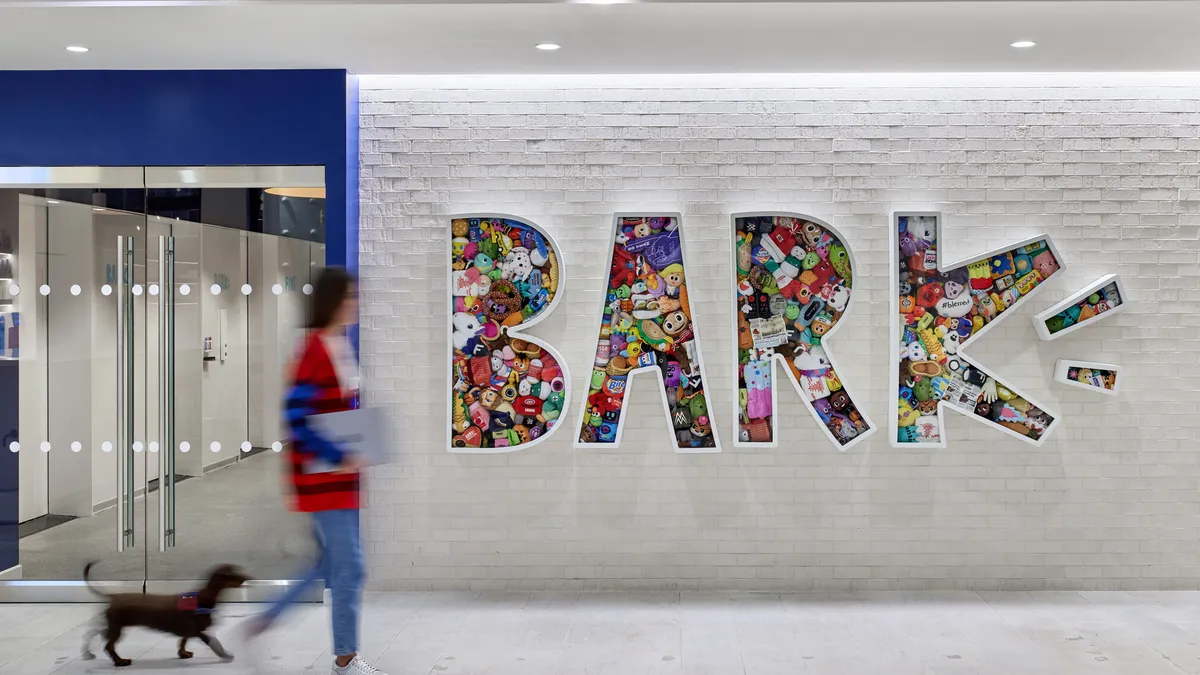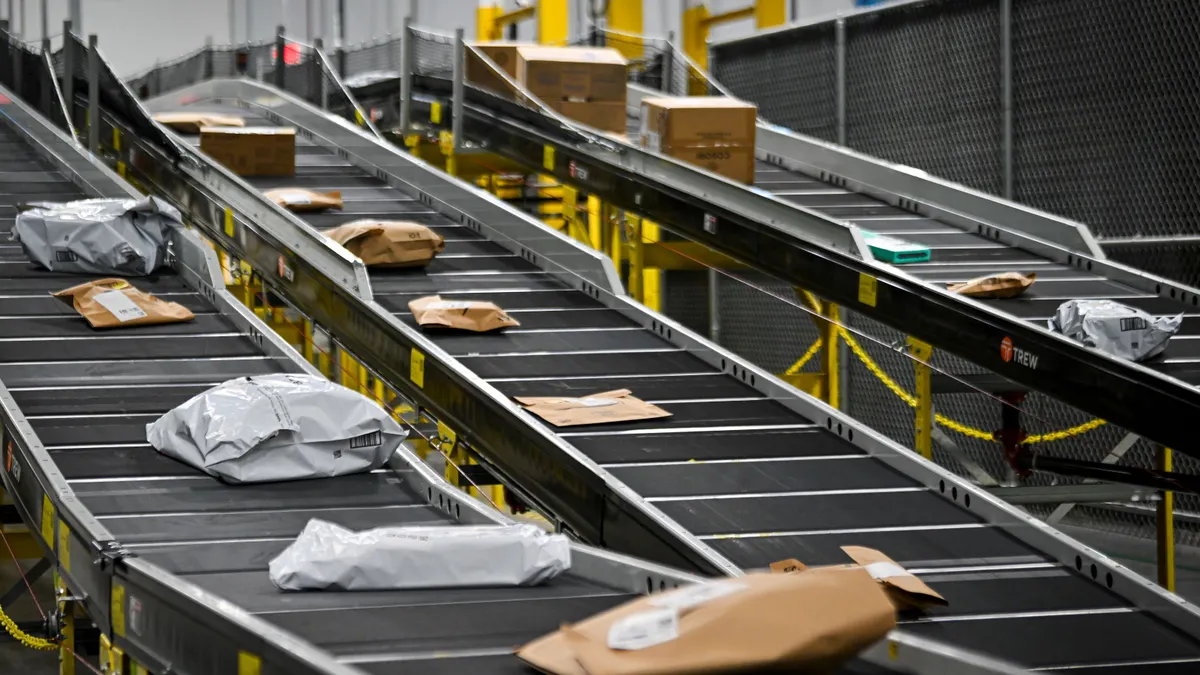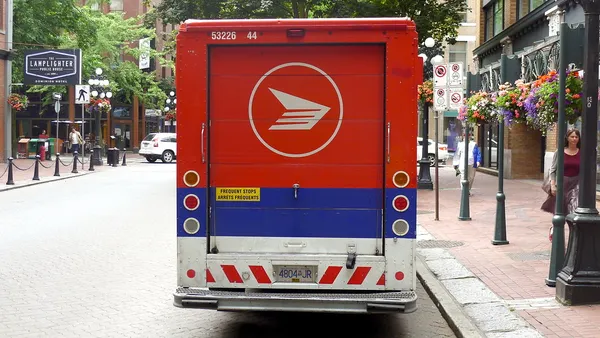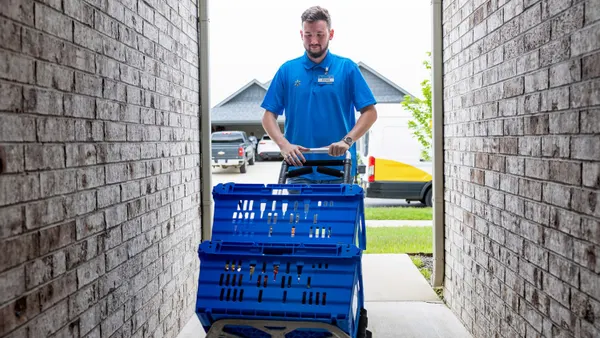Dive Brief:
- Bark is now using Amazon for U.S. deliveries in a bid to boost shipping speed and limit rising costs, executives for the dog toys and treats brand said earlier this month.
- Amazon is accepting the BarkBox owner's products into its last-mile network for delivery seven days a week, according to James O'Leary, Bark's chief supply chain officer.
- "We've been able to significantly improve our costs," O'Leary said. "We improved our transit times from one to three days for 90% of our customers." BarkBox shipments in the contiguous U.S. have a standard delivery time of two to eight business days.
Dive Insight:
Rising prices at major delivery services are pushing businesses to seek alternatives, such as Amazon’s growing shipping capabilities. Early last year, Bark used a combination of FedEx, the Postal Service and Pitney Bowes to deliver to U.S. customers, following efforts to consolidate its carrier mix and renegotiate shipping contracts.
"The prices fluctuate like every couple of years," O'Leary said. "You get into agreement, your volume is really important. We ourselves were locked into some long-term agreements with some of these last-mile carriers."
Bark executives did not provide the timing of the Amazon transition, but the company made the jump after facing increased shipping costs tied to shifts at the U.S. Postal Service. Starting in 2024, the agency ended various discount agreements that allowed shipping partners to drop off packages at the Postal Service's final-mile delivery units at a lower rate. O'Leary pointed to UPS SurePost, now called Ground Saver, as an example of one of the products affected.
"The cost of those products increased significantly and it had a fairly significant impact to us," he said.
Bark ships over 1.1 million packages per month, but the dimensions, weight and shipping cadence of its packages are "fairly consistent," O'Leary said. That profile makes Bark "absolutely perfect" for Amazon's last-mile network, which caters to direct-to-consumer shippers, he added.
Bark posted an 8% YoY decline in shipping and fulfillment expenses for the quarter that ended June 30. Lower direct-to-consumer volume was the primary driver of that drop, CFO Zahir Ibrahim said on an earnings call last month.















